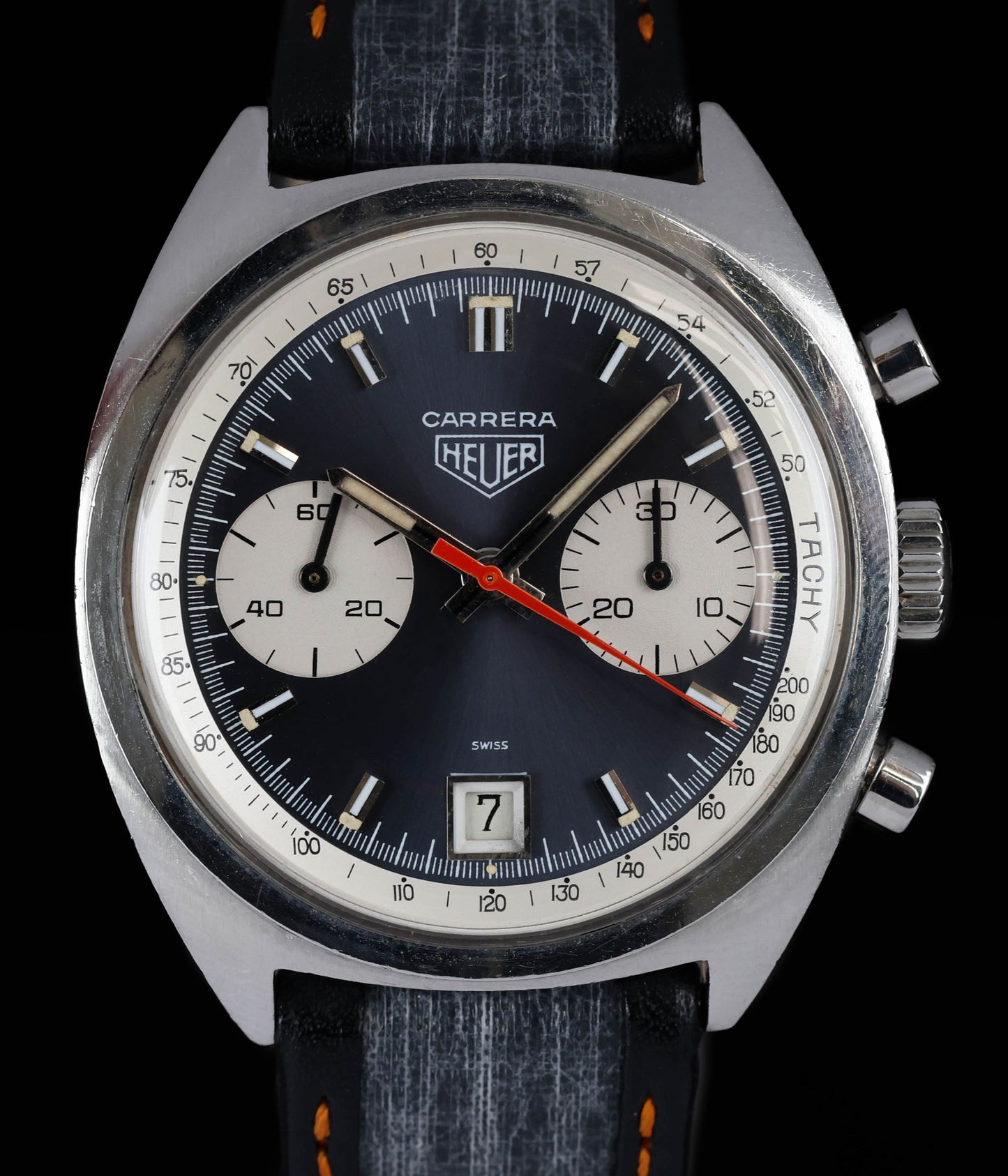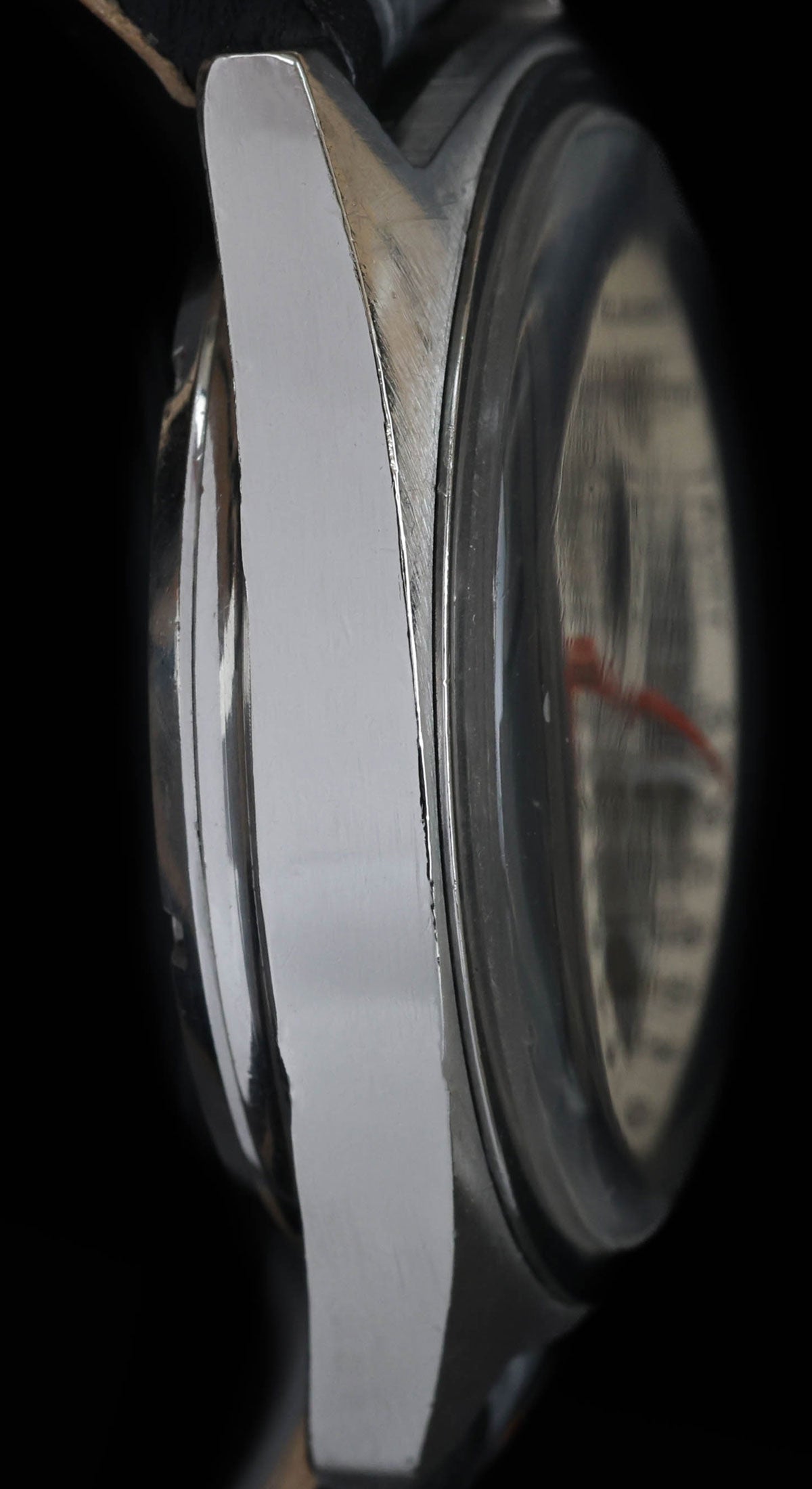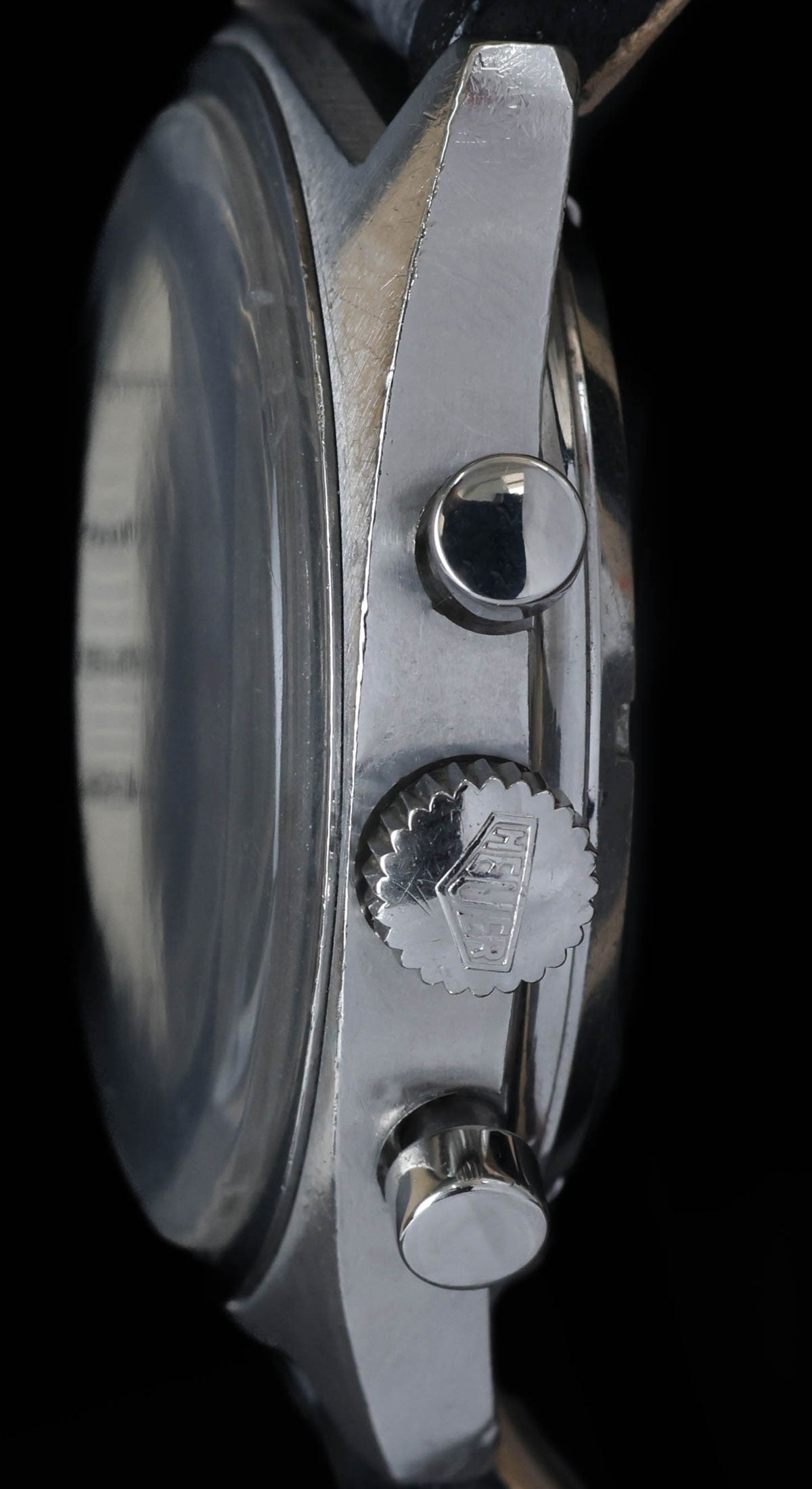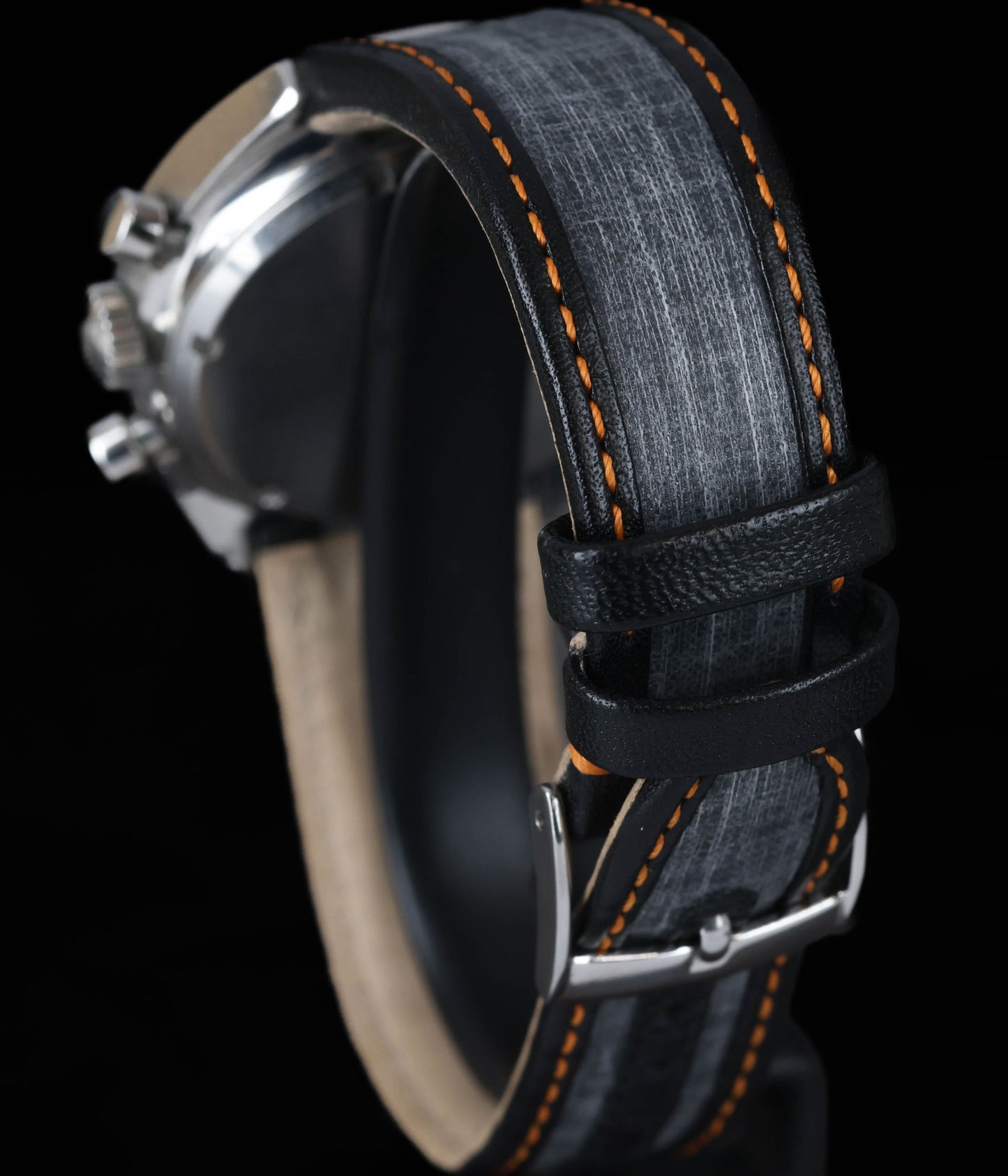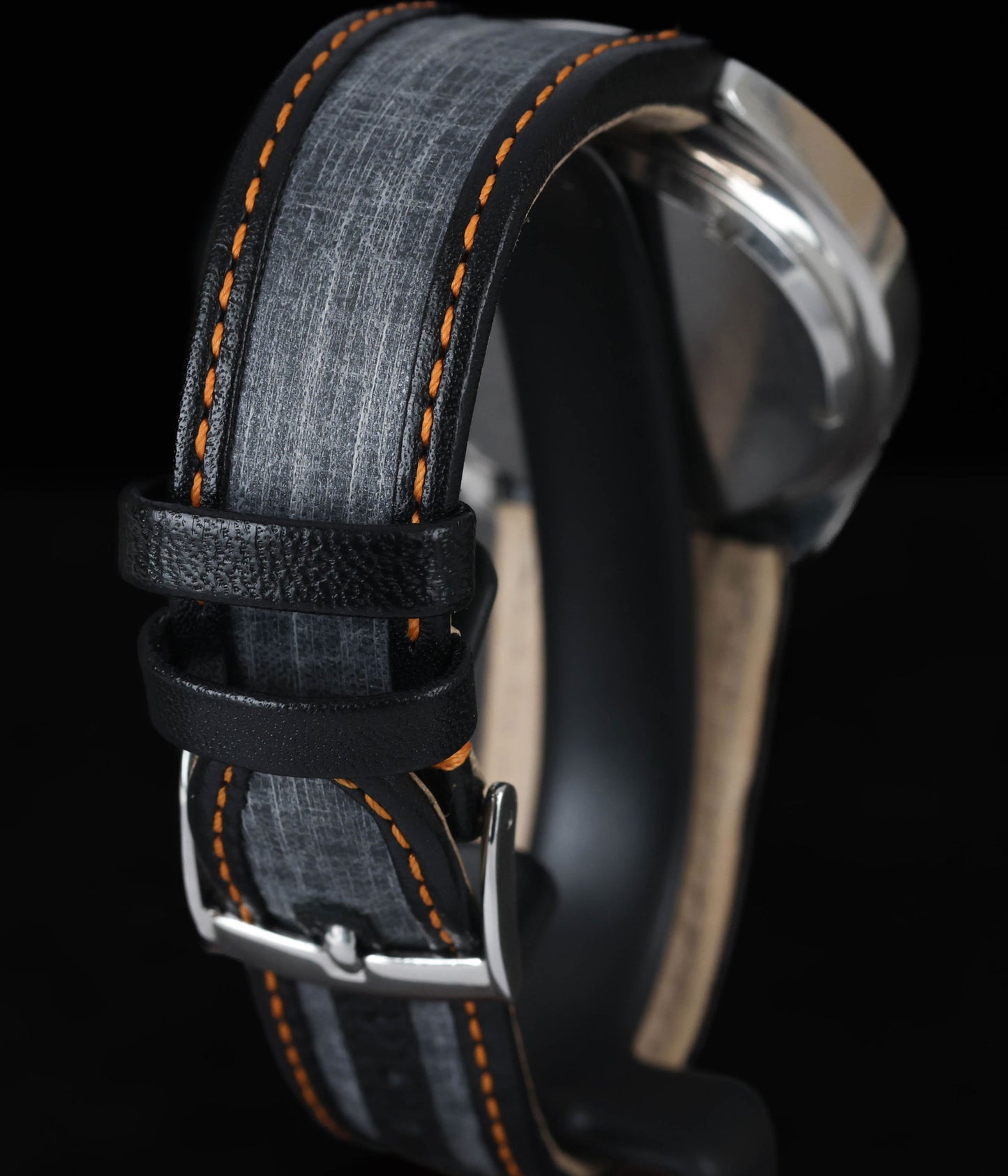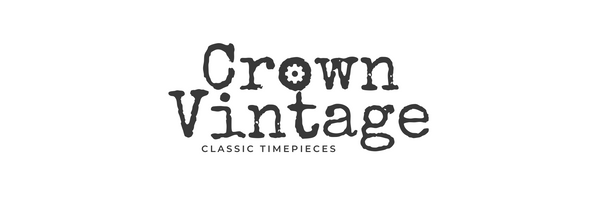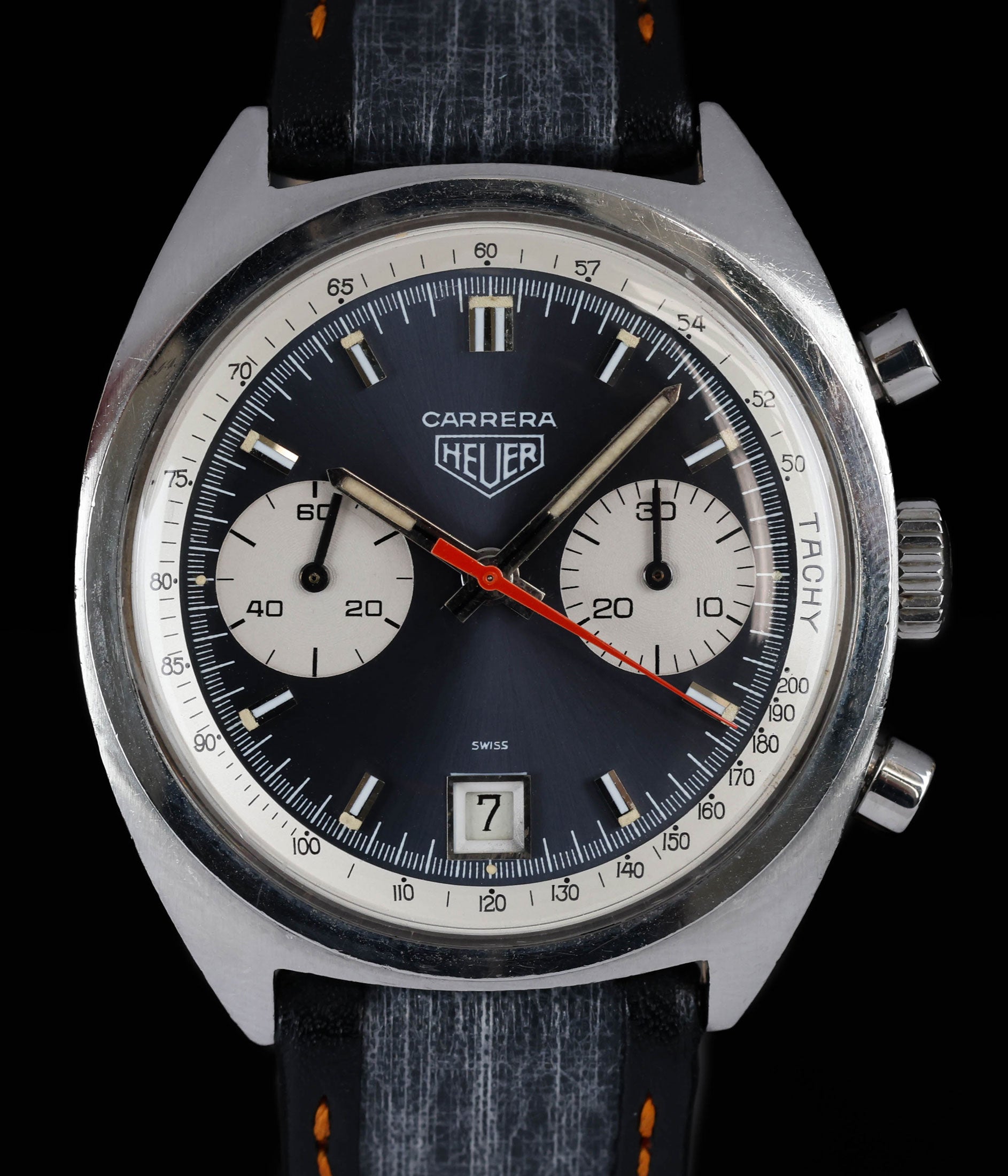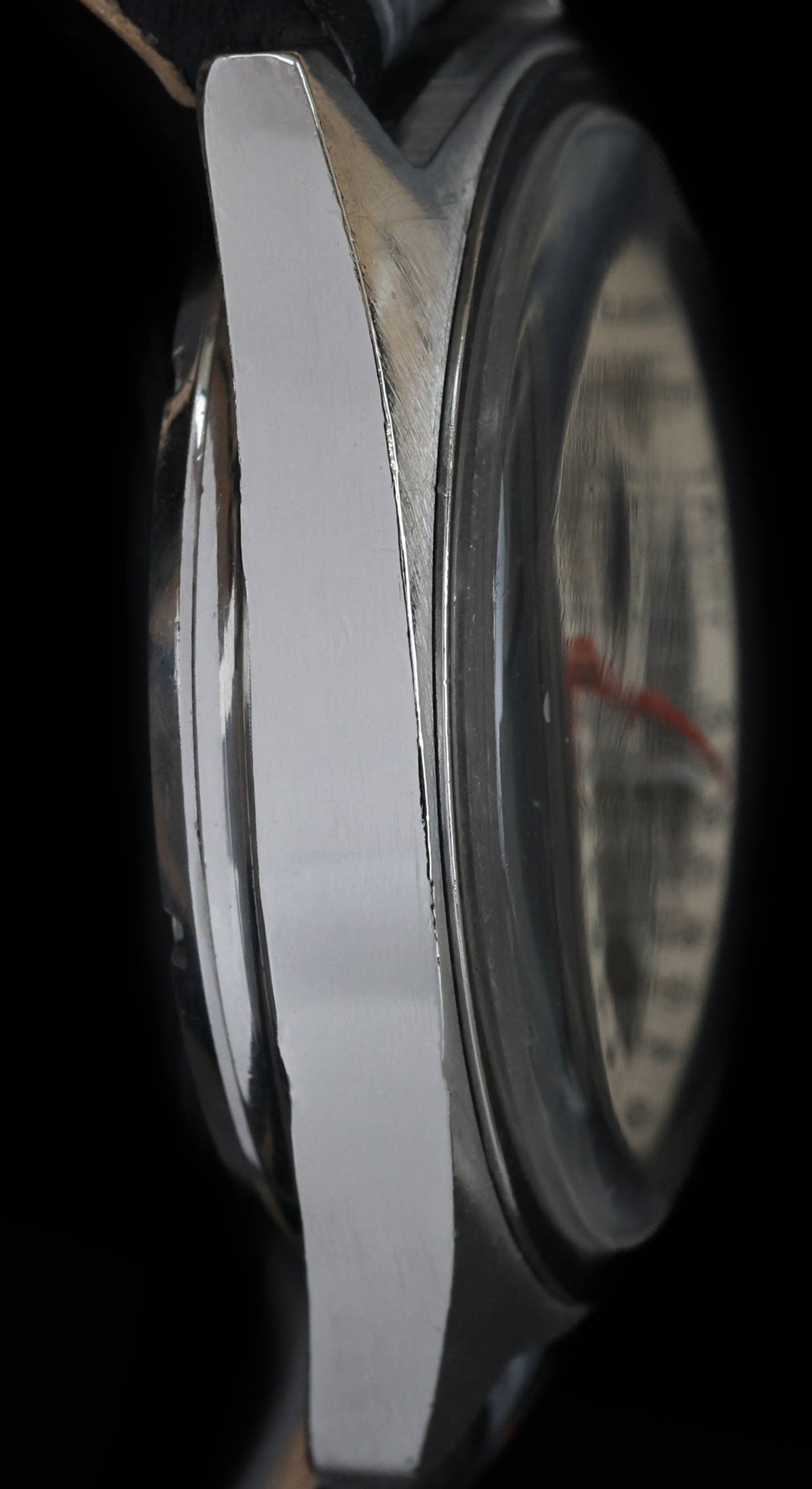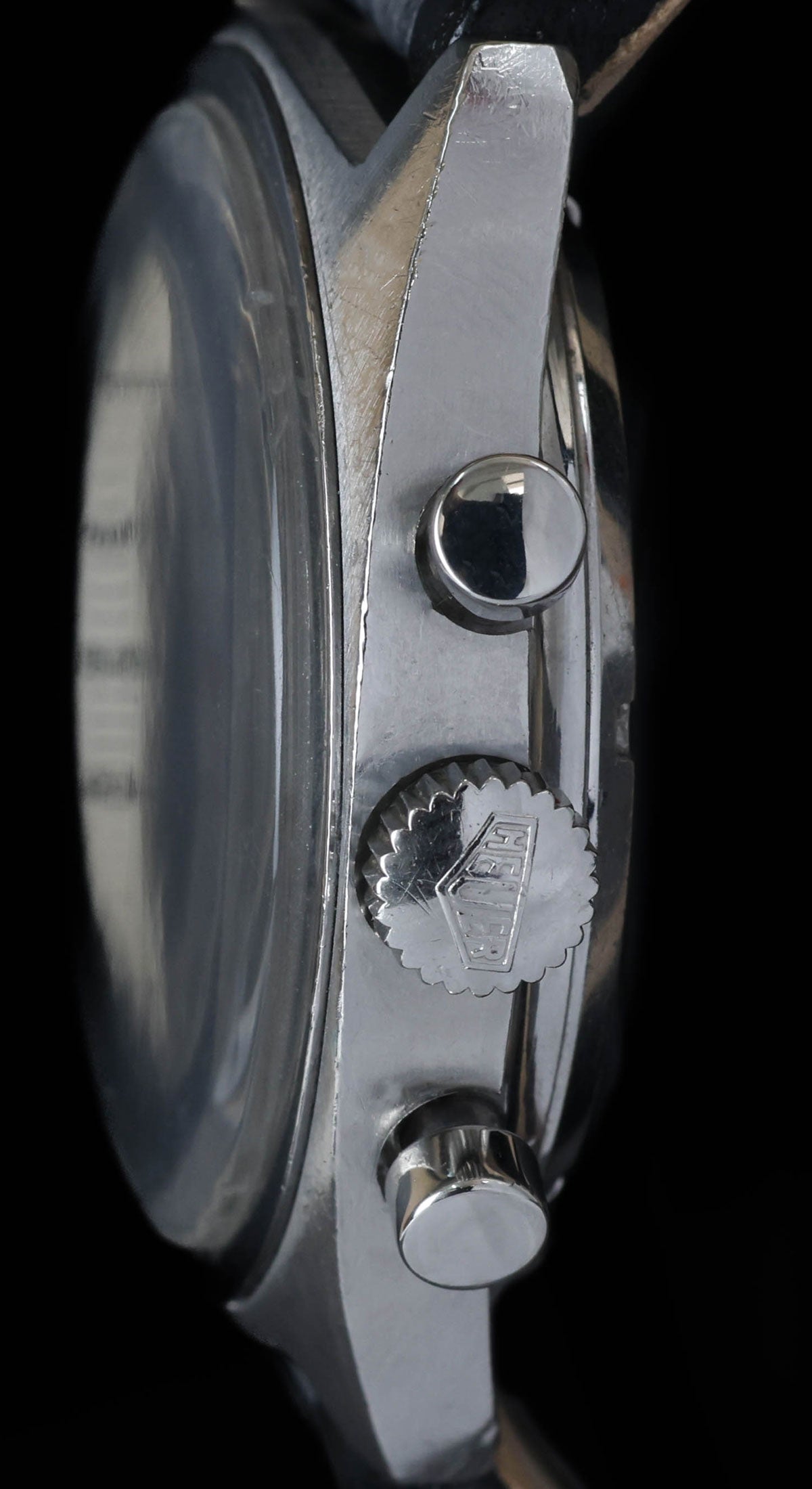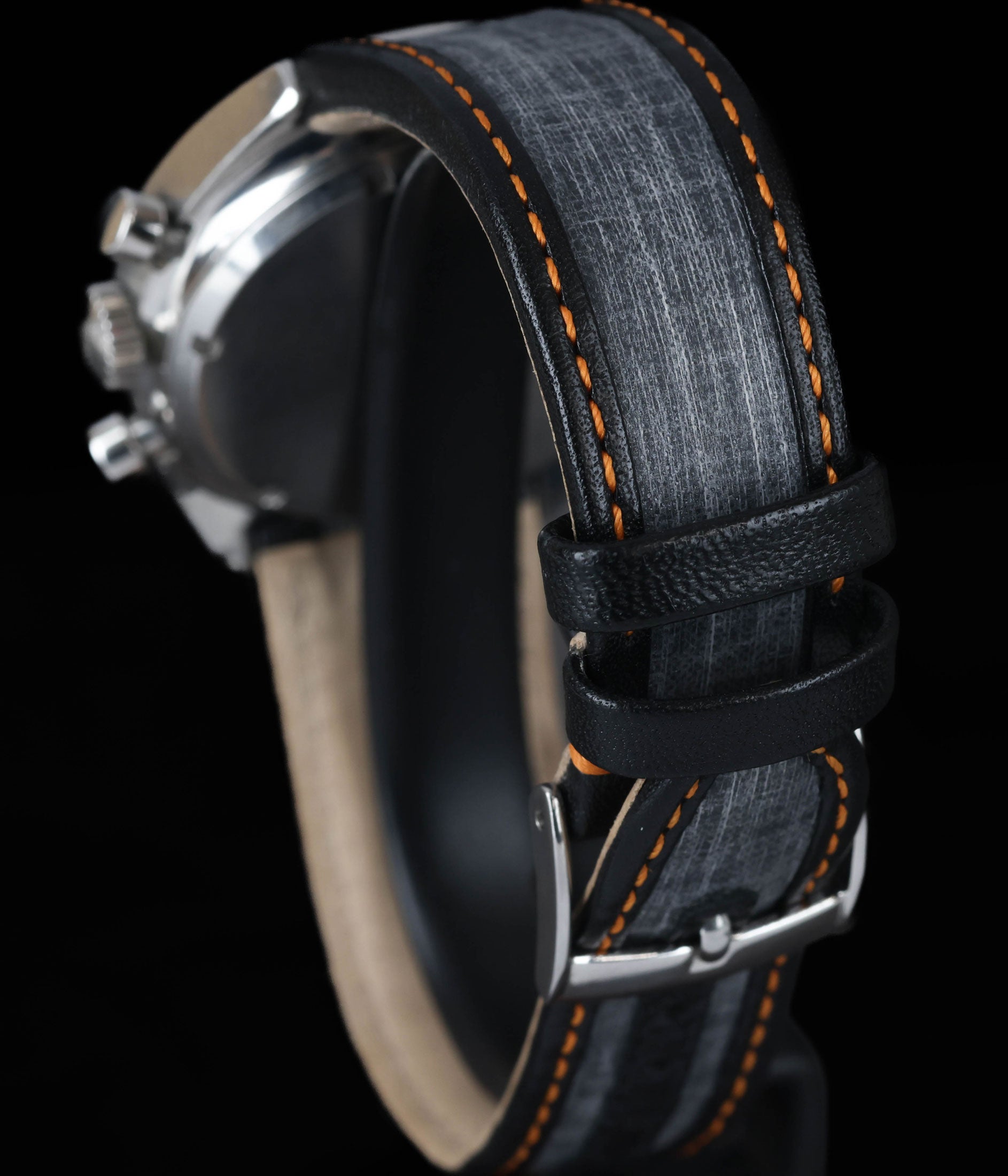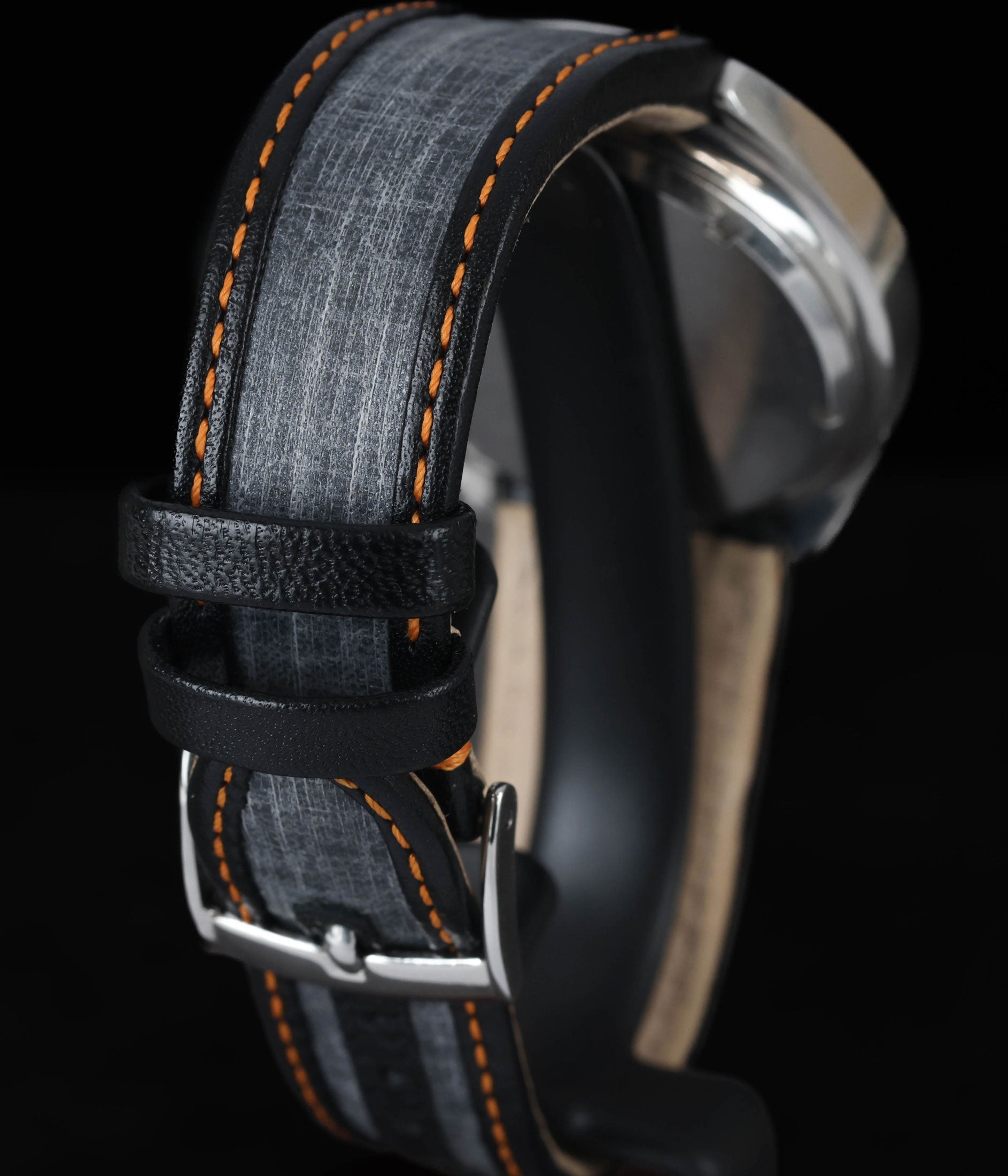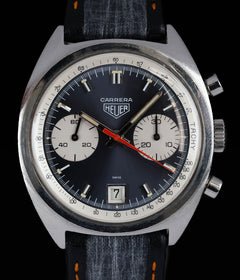Crown Vintage
Heuer Carrera 7853N 39mm Circa 1970
Heuer Carrera 7853N 39mm Circa 1970
Couldn't load pickup availability
This Heuer Carrera 7853 is a stunning vintage chronograph that embodies classic racing heritage. The dial and hands are in great condition, offering excellent legibility with a touch of vintage charm. Light oxidisation is present, adding character without compromising readability. The stainless steel case remains in good condition, showing only minor hairline scratches that are consistent with careful wear. Paired with a well-preserved strap that shows no visible signs of wear, this timepiece is a fantastic choice for collectors and enthusiasts seeking an iconic Carrera with timeless appeal.
Share
Why we love this watch
Why we love this watch
The Heuer Carrera 7853: The Enduring Classic with Racing at Its Core
When it comes to legendary chronographs, the Heuer Carrera is a name that always comes up. Since its debut in 1963, the Carrera collection has been admired for its sleek design, precise movements, and deep connection to motor racing. Among the many models that have emerged over the years, the Heuer Carrera is the one we keep coming back to in our articles. This example, the 7753 was produced in the 1970s, this watch is the perfect balance of style and functionality. We keep debating in the office whether this is a reverse panda, but because I’m writing this article I will call it a reverse panda.
Let’s take a closer look at Heuer’s history, what makes the Carrera so iconic, and why the 7853 is such a prized vintage timepiece. We’ll also explore the broader story of the Carrera and what makes it such a sought-after classic.
The Heuer Heritage
Let’s start with some history. Edouard Heuer founded his namesake brand in 1860, and it quickly gained a reputation for producing high-quality timepieces and pioneering watchmaking. Over the years, Heuer introduced major advancements, such as the oscillating pinion for chronographs and early automatic chronograph movements.
By the mid-20th century, Heuer watches were a favourite among motor racing teams. From pit lane stopwatches to dashboard timers tracking split-second laps, Heuer became a fixture in motorsport. This connection to racing has always been at the heart of the brand.
Fast forward to 1985, and Heuer was acquired by the TAG Group, leading to the creation of TAG Heuer as we know it today. Despite the change in ownership, the brand remained committed to its founding principles: producing accurate, durable watches with easy-to-read dials—perfect for both race car drivers and watch enthusiasts alike.
The “Carrera” Name and Its Racing Roots
One of the most defining moments in Heuer’s history came in 1963 when Jack Heuer, great-grandson of Edouard Heuer, introduced the Carrera. He took inspiration from the Carrera Panamericana, a grueling and dangerous road race held in Mexico in the 1950s. Jack wanted the name to capture the essence of speed and everything that racing embodies.
From the very start, Carreras were designed with drivers in mind. Jack Heuer understood that during a race, a driver’s attention is on the track, not on a watch. So, the Carrera was designed with a clean, minimalist dial, a thin bezel, and large, legible subdials. The layout was deliberately simple, allowing drivers to check the time at a quick glance. This focus on usability has remained central to the Carrera’s design philosophy ever since.
Under the Bonnet: The Movement
At the heart of the Heuer Carrera 7853 is a robust, manually wound chronograph movement—based on the Valjoux 7730 (the Valjoux 7734). These Valjoux calibres were hugely popular for a reason: they were reliable, fairly straightforward to repair, and built to last. Operating at 18,000 vibrations per hour, they might not have the high-beat speed of some modern movements, but they’re consistent and dependable.
One of the simple pleasures of owning a manual-winding watch is the daily ritual of powering it up. Instead of relying on the motion of your wrist like an automatic, a hand-wound movement demands a bit of attention—giving you a moment each day to connect with the watch’s inner workings.
A Deeper Dive into the Carrera’s Evolution
To truly appreciate the Heuer Carrera 7853, we need to look at the Carrera’s broader history. Since its introduction in the 1960s, the Carrera has been all about clarity and ease of use. Early models, such as the ref. 2447 and ref. 3647, set the tone with their clean, understated aesthetics—qualities that immediately caught the attention of racing teams and enthusiasts. We, like many of you, would love to get our hands on one of these pieces.
During the 1960s, Heuer’s reputation in motorsport skyrocketed. Whether you were a professional driver or a passionate amateur, you probably knew about Heuer’s stopwatches and dashboard timers. The brand became synonymous with precision timing on the track, and this association only added to the Carrera’s desirability.
A major breakthrough came in 1969 when Heuer teamed up with Breitling, Hamilton-Buren, and Dubois Dépraz in a legendary race to develop the world’s first automatic chronograph movement. The result was the famous Calibre 11, which debuted in Heuer’s Autavia, Monaco, and automatic Carrera models like the ref. 1153. This innovation cemented Heuer’s reputation as a technical pioneer.
However, not everyone immediately embraced automatic watches. Many watch enthusiasts and professional drivers still preferred traditional hand-wound movements, appreciating the tactile experience of winding their watch each morning. This preference led Heuer to continue producing manual-wind Carreras throughout the 1970s, including references like the 7853, which stayed true to the original Carrera’s pure and functional design.
Then came the “Quartz Crisis,” when affordable quartz watches flooded the market, threatening the Swiss watch industry. Mechanical watches suddenly seemed outdated. But for purists who valued craftsmanship, the mechanical Carrera never lost its appeal. Sure, they were more expensive and required maintenance, but nothing compared to the satisfaction of winding a mechanical chronograph and hearing it tick.
By the 1980s, Heuer had transitioned into TAG Heuer, beginning a new era. However, by the mid-1990s, the company recognized that there was still a deep appreciation for vintage Carreras. This led TAG Heuer to release re-editions that paid tribute to the original designs created by Jack Heuer decades earlier. These models reignited interest in the Carrera and helped fuel the growing market for vintage Heuer watches. Today, modern Carrera models combine advanced materials and movements with the same design DNA that made the original so iconic. In short, the Carrera’s legacy is one of resilience, innovation, and an enduring love for motorsport—a legacy that the Heuer Carrera 7853 proudly upholds.
Case & Bracelet
Case & Bracelet
- Case in good condition, has light hairlines (visible)
- Strap in good condition, no visible wear
Dial & Hands
Dial & Hands
- Dial & hands good condition
- Light oxidisation visible
Warranty & Condition
Warranty & Condition
Crown Vintage Watches provides a minimum 3-month mechanical warranty on pre-owned watches, from the date of purchase.
The warranty covers mechanical defects only.
The warranty does not cover damages such as scratches, finish, crystals, glass, straps (leather, fabric or rubber damage due to wear and tear), damage resulting from wear under conditions exceeding the watch manufacturer’s water resistance limitations, and damage due to physical and or accidental abuse.
Please note, water resistance is neither tested nor guaranteed.
Shipping and insurance costs for warranty returns to us must be covered by the customer. Returns must be shipped via traceable courier. Return shipment must be pre-paid and fully insured. Collect shipping will be refused. In case of loss or damages, the customer is liable.
Our Pledge
At Crown Vintage Watches, we stand by the authenticity of every product we sell. For added peace of mind, customers are welcome to have items independently authenticated at their own expense.
Condition
Due to the nature of vintage timepieces, all watches are sold as is. We will accurately describe the current condition and working order of all watches we sell to the best of our ability.
Shipping & Refund
Shipping & Refund
